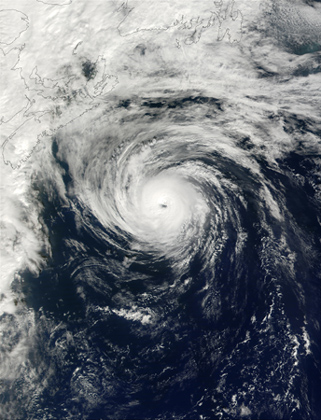The 2013 hurricane season tied a record for the era of modern weather observations. The first hurricane, Humberto, didn’t form until September 11th. Since forecasters began using satellites in the 1960s, there’s been only one other season where the first hurricane formed that late.
 1914 is the weakest Atlantic hurricane season on record, not a single hurricane formed that year. Credit: NASA
1914 is the weakest Atlantic hurricane season on record, not a single hurricane formed that year. Credit: NASAYet that’s nothing compared to the hurricane season of 1914. That year, the first tropical storm didn’t form until September 14th — and it was the only storm of the entire season. In fact, 1914 is the weakest Atlantic hurricane season on record.
At the time, the Atlantic was at the low point of a cycle known as the multidecadal oscillation. Surface water temperatures in currents like the Gulf Stream vary by about one degree Fahrenheit, perhaps as a result of a change in the amount of fresh water that flows into the Atlantic. During cooler periods, the overall level of tropical activity is lower; during warmer periods, it’s higher. Each period lasts roughly 20 to 40 years.
The early 1900s were a time of low activity, with 1914 in the middle of that period. Even so, 1914 was unusually quiet — there were six tropical storms or hurricanes both the year before and the year after.
The only known storm for 1914 began near the Bahamas, and hit the U.S. coast along the Florida-Georgia border on September 16th. Winds peaked at 70 miles per hour — just below hurricane force. The storm moved westward, and dissipated over Texas — bringing the hurricane season of 1914 to an early and quiet end.

